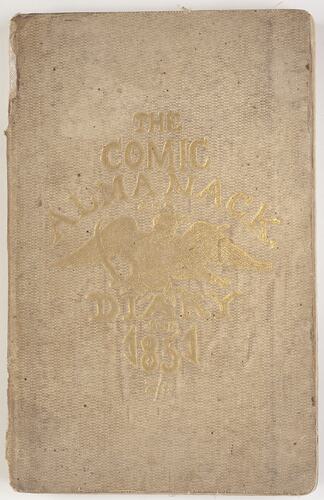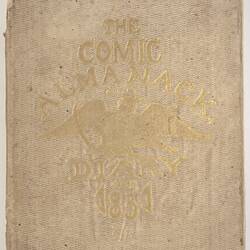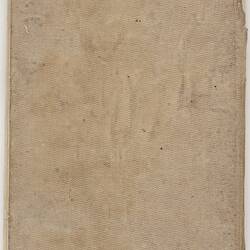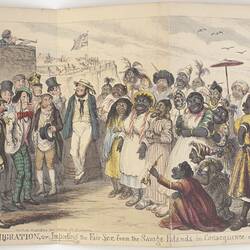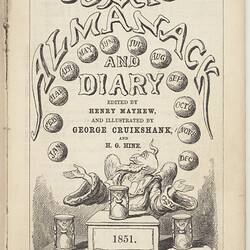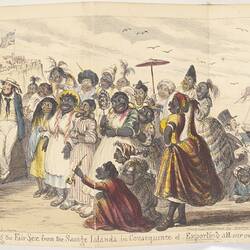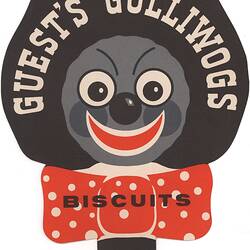Summary
Note: This object includes derogatory racist and sexist human depictions and white superiority messaging. Such depictions are not condoned by Museums Victoria which considers them to be racist and sexist. Historical distance and context do not excuse or erase this fact.
Book entitled 'Comic Almanack Diary' illustrated by George Cruikshank and published by David Brouge, London in 1851. The book features a colour print, entitled: 'Probable Effects of Over Female Emigration or Importing the Fair Sex from the Savage Lands in Consequence of Exporting all our own to Australia!!!!!' which satirises English fears about the exodus of British women to Australia, leaving Britain vulnerable to female immigration from Pacific colonies. During the first half of the 1800s, it became apparent that decades of predominantly male migration from Britain to Australia had resulted in an extreme shortage of women, causing significant social unrest in the colony. Concerted efforts to address this imbalance included the offer of assisted passages for British women to migrate to Australia, the popularity of which, in turn, resulted in a critical shortage of women in Britain.
This satirical print, by the prolific British caricaturist and illustrator George Cruikshank, offers a 'solution' to the problem and a warning of its potential consequences. George Cruikshank (1792-1878) was praised as the 'modern Hogarth' during his life. His book illustrations for Charles Dickens - who was his friend - and many other authors reached an international audience.
The blatant racism and sexism exposed in this image, and also in the accompanying comic essay on 'Female Emigration', demonstrates the development of ideas about racial hierarchies popular during the nineteenth century. In Cruikshank's dockside scene, an array of coarse, racist portraits of women from Pacific, Caribbean and African countries, have disembarked in England in response to the desperate call for female immigration. They are met with evident horror by the group of pale Englishmen (depicted satirically) who are gathered to greet them. Such crude racist stereotypes were commonly represented in visual imagery of the time and continued well after the abolition of slavery.
Physical Description
Small book with cream-coloured cover, 90 pages. The book cover title is printed in gold lettering. The book contains essays, advertisements, a diary, stories, poems and illustrations, including a four-folded, full-colour illustration fold-out from the rear of the front colour.
More Information
-
Collecting Areas
-
Acquisition Information
Purchase
-
Editor
-
Illustrator
-
Illustrator
-
Publisher
David Bogue, Fleet Street, London, England, Great Britain, 1851
-
Printer
Henry Vizetelly, Printer & Engraver, Fleet Street, London, England, Great Britain, 1851
-
Inscriptions
Front cover: The Comic Almanack Diary 1851 Front page: The Comic Almanack and Diary edited by Henry Mayhew and illustrated by George Cruikshank, and H.G. Hine/ 1851/ David Bogue, Fleet Street, London
-
Classification
-
Category
-
Discipline
-
Type of item
-
Overall Dimensions - Closed
105 mm (Width), 130 mm (Depth), 163 mm (Height)
-
Overall Dimensions - Unfolded
420 mm (Width), 163 mm (Height)
-
References
www.revealinghistories.org.uk/
-
Keywords
Cartoons, Diaries, English Immigration, Immigrant Shipping, Immigration, Immigration Debates, Immigration Policies, Immigration Selection, Population, Race Relations, Cultural Stereotypes, Racism, British Immigration
